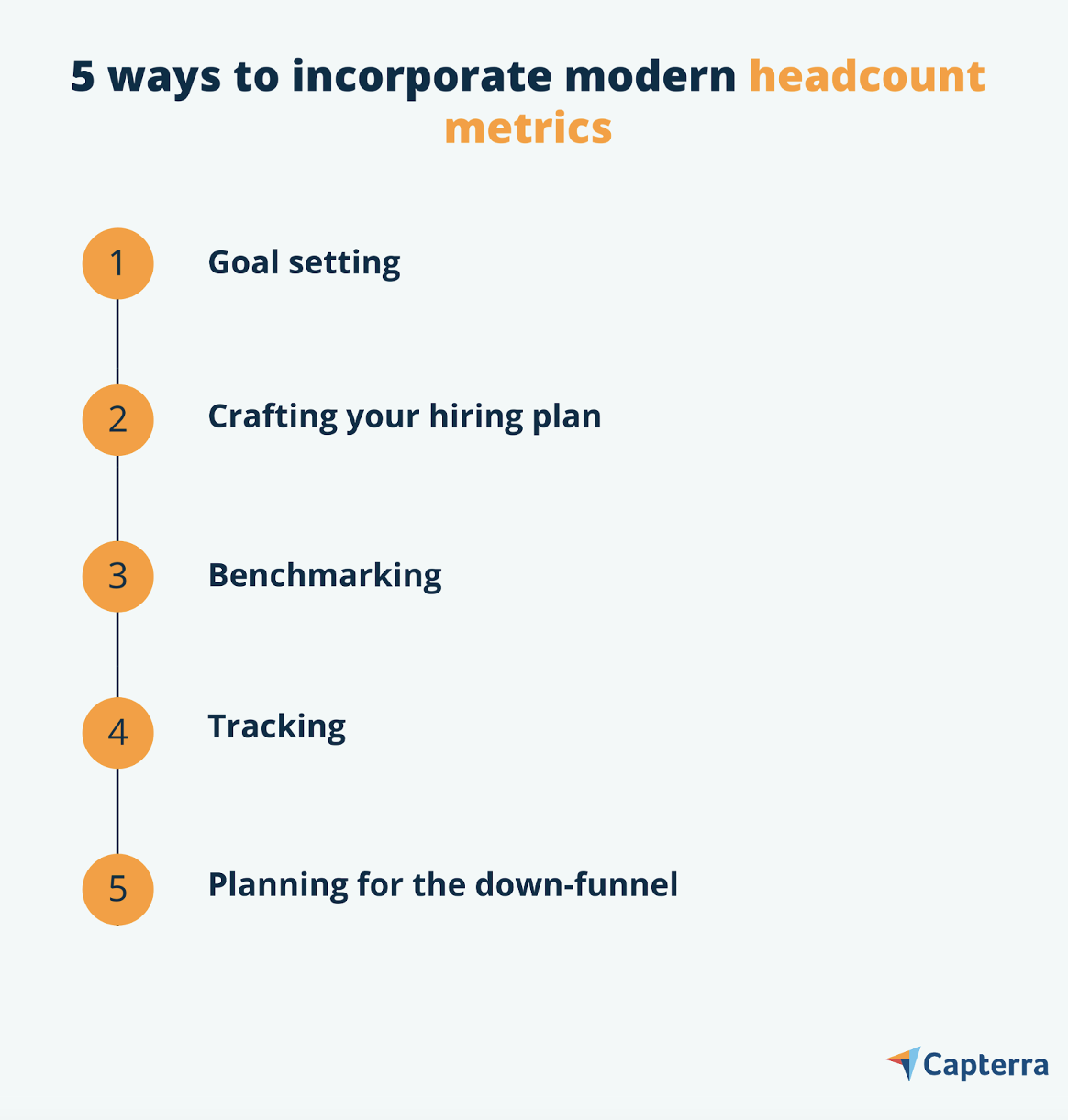This look into modern metrics tracking will help you gain visibility into your applicant tracking process and headcount goals.
If you're still using traditional recruiting metrics, they can serve as a basic check for your team’s hiring process. However, modern recruiting metrics are different—they are actionable, real-time, and goal-oriented, allowing your team to iterate on its recruiting process and priorities quickly.
One key metric for high-growth teams is tracking progress to a headcount goal. Hitting your headcount goals is central to other business goals, such as sales and product development, and can tell you a lot about your team’s overall hiring efficacy.
We’re taking a deep dive into modern metrics tracking to show you how to keep your headcount planning and applicant tracking process as smooth and powerful as possible. You can use your ATS to implement this system. If your ATS doesn’t offer tracking with this depth, a business intelligence tool or even a spreadsheet can fill the gap.
5 ways to approach headcount measures in a new way
The current talent pool for startups is an intensely competitive one, and the ability to pivot quickly is mission-critical for your recruiting team. You’ll be able to respond to changes in the market and hiring landscape faster if the metrics you’re tracking are rich with data and nuance, and this will give you an edge in today’s talent market.

1. Goal setting
Before you can begin tracking, you need to know what you’re aiming for. That means setting goals for your team. The best headcount goals accomplish three things:
Actionable: The goal is achievable, and none of the steps you’ll take to reach it are, themselves, blockers.
Real-time: You’ll need a way to monitor the metrics you’ve set on a regular, ongoing basis (an ATS should help here, as it will help you keep track of and process the data points you provide with minimal manual effort).
Focused: The goal and metrics are both specific and well-defined.
As long as your goals hit those three marks, you’ll be in great shape to chase them, no matter how ambitious.
2. Crafting your hiring plan
You’ll be using those goal-setting marks to help you create your hiring plan. More than just a goal, your plan is a step-by-step roadmap, with the mile markers you plan to follow and the actions you’ll take to get there.
Depending on the size of your company, you have a few options when it comes to your hiring plan approach. You may want an intensely detailed plan for the next quarter, breaking down seniority levels, job titles[1], and goals that are assigned to different hiring managers. Or you may want to cast a more general net, aiming for a number of staff per department, but remaining flexible about the details.
The right approach for you will depend on the goals you set and the amount of resources you have available to devote to the project. Be deliberate in breaking up your goals; conversion rates, time in-process, and other metrics can vary widely across different roles, locations, and departments. Single, company-wide goals are not realistic.
3. Benchmarking
To see how far you’ve progressed on the path to your goals, you’ll need historical data to compare it against. Think of this benchmarking data as a way of converting input metrics into output metrics. For instance, the actions you undertake to improve candidate experience (input) into hires (output.)
If you’re a new company, you may not have this yet, and that’s OK—but the sooner you begin tracking, the better your data will be. As you begin tracking, start with major functional areas, like engineering or sales. You can always get more granular later on.
4. Tracking
You’ve put so much attention into goal-setting—it should come through in the metrics you choose to track. Don’t limit yourself to a checklist of the same metrics you’ve always tracked. Instead, customize the metrics to the goal in question.
For example, let’s say you wanted to hire ten marketers in the next quarter.
Your benchmark data tells you that from application to hire, you have a ratio of 5:1 for this role, so you’ll probably need to source 50 applications to reach your hiring goal.
Tracking applications is a goal that tells you a lot. But if you want to focus more, you might consider cutting out the “fluff” of applications that were never a fit in the first place. You might start tracking your goal at the recruiter screening level instead. This metric is more actionable, as it can be changed quickly if your plans go awry.
Once you have the metrics figured out, you can represent your progress visually using pacing charts. In this instance, you might create a bar graph to display the number of recruiter screens to the number of hires, and see if a pattern forms quarter-over-quarter.
This is just one example, but the key idea to keep in mind is how the metrics you choose to track fit against your goals.
5. Planning for the down-funnel
Don’t let your tracking remain static. You want to track activity at multiple stages of your hiring funnel. While these down-funnel metrics may not be especially useful in the near-term, they’ll be immensely helpful for creating long-term changes and updates.
Consider setting up points to monitor, such as the number of final-round interviews, number of offers extended, etc., rather than simply applications received and applicants hired.
It becomes much easier to track this granular, stage-by-stage information once you have your primary goal metrics set up. The sooner you start passively tracking down-funnel, the more data points you’ll have once you’re prepared to iterate.
Keeping your edge
How the best businesses calculate and track headcount metrics is changing quickly, but staying on top of them will help you keep the edge in a competitive hiring market.
If you’d like to learn more about headcount planning, other key talent metrics, and HR tech, check out the following resources:

